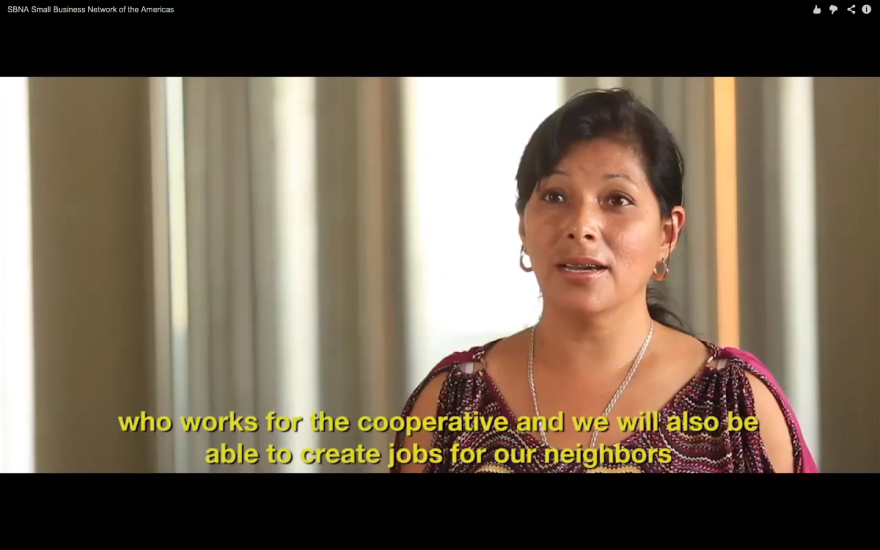Six years ago I visited an indigenous village in southern Mexico called Santa Cruz Mixtepec. It was, or used to be, one of those impoverished rural hamlets that sent most of its population over the U.S. border to find living-wage work.
Until somebody got the bright idea to start promoting small businesses there. Through micro-lending and other assistance, Santa Cruz Mixtepec began sprouting small but viable enterprises. A carpentry shop. An irrigated tomato greenhouse. A window-frame maker.
More important, migrant workers started returning. Even if they didn’t make as much as they did in the U.S., many found that they could at least make enough to live, and start families, at home instead of al otro lado -- on the other side.
And that’s something too many U.S politicians just don’t get. They’d rather wage a futile battle against illegal immigration on the border, with a multi-billion-dollar wall, rather than use that wad to actually solve the problem at its source -- in communities like Santa Cruz Mixtepec.
New Regional Network
I’m not all that sure that President Obama, for whom Latin America has so far been a five-year-long afterthought, gets it either. But he at least showed signs of it last year at the Summit of the Americas in Cartagena, Colombia, when he launched the Small Business Network of the Americas (SBNA).
The initiative’s aim, Obama said, is to “link up” small business in the U.S. and Latin America, via organizations like universities and business development centers. Last month the SBNA shifted into fuller gear when it announced its International Sister Center Program -- in Orlando, which is hardly coincidental since Florida is a major gateway to Latin America for the Network.
The sister program will “help small businesses by giving them technical assistance, mainly in Latin America,” says Eileen Rodriguez, the regional director for the Small Business Development Center at the University of South Florida in Tampa.
Which is all a good thing. But the question is: Can the SBNA overcome the daunting challenges that small business has to deal with in Latin America? The reality is that U.S. small- and medium-size enterprises operate in paradise compared to what their counterparts deal with in countries like Mexico and Brazil.
Adverse Business Climate
Let’s start with the criminally scant access they have to credit and capital -- the first big hurdle the entrepreneurs in Santa Cruz Mixtepec had to jump. Small businesses employ two-thirds of the region’s workforce, yet they receive a meager 12 percent of the business financing distributed by its banks.
That’s less than half what small business gets in developed countries. Not to mention the exorbitant interest rates Latin American small businesses have to pay when they do get it.
Or the unfair monopolies that smaller Latin American enterprises confront. In Mexico, it’s not unusual for large companies to control as much as 95 percent of their market shares, from tortillas to telecom.
Or the nightmarish red tape. Here’s one reason so many millions of Brazilian protesters hit the streets last summer: It still takes 119 days just to open a legal business in Brazil, more than triple the time required in China.
One result: most small business in Latin America exists underground as a separate and illegal shadow economy that is one of the region’s biggest development obstacles.
Last month the SBNA shifted into fuller gear when it announced its International Sister Center Program -- in Orlando, which is hardly coincidental since Florida is a major gateway to Latin America for the Network.
“These are issues that loom large,” says Jerry Haar, a Latin America expert and professor of management and international business at Florida International University. “Some are almost intractable.”
Haar says efforts like the SBNA “should be championed.” But only if they appreciate “one caveat: the realistic expectation of what can be accomplished” by them given the entrenched forces lined up against small enterprises south of our border.
That means leaders like Obama need to do more than help Latin American small business with technical assistance. They need to lobby Latin American governments and business sectors to give smaller enterprises a more level playing field -- making anti-trust policies, for example, a more serious conversation point in free trade discussions.
As Rodriguez points out, if the SBNA works, “The companies that we’re helping here in the U.S. are going to be able to do more business with the companies that take advantage of the technical assistance in Latin America.”
In other words, if small business is allowed to thrive in Latin America, it creates potentially vast -- and closer -- international markets for U.S. small business. And vice versa. That’s the kind of networking the hemisphere urgently needs.






